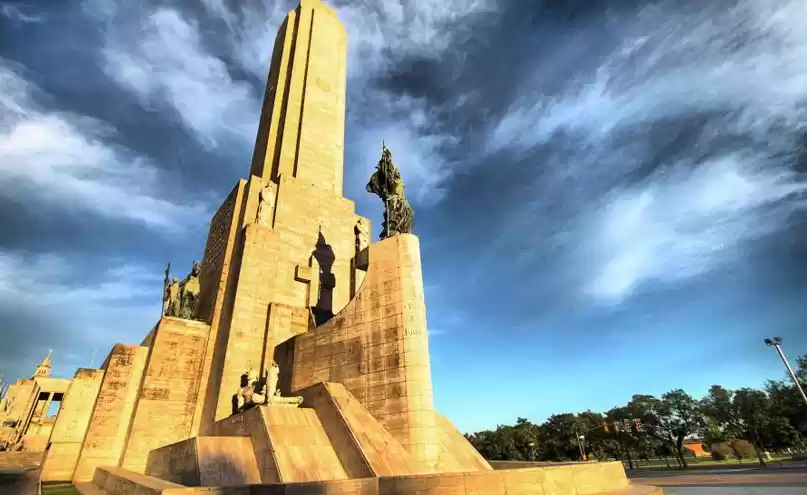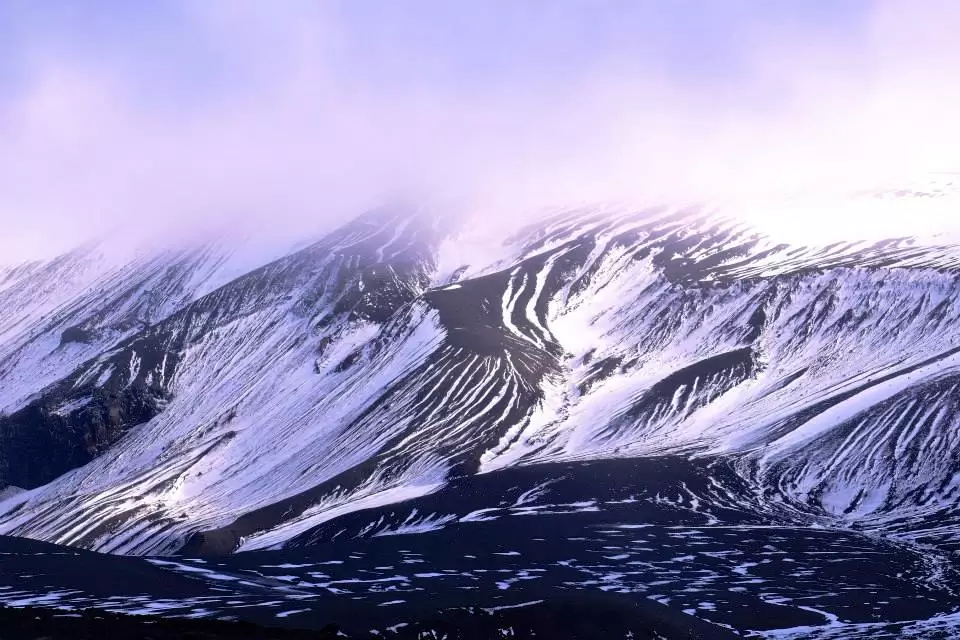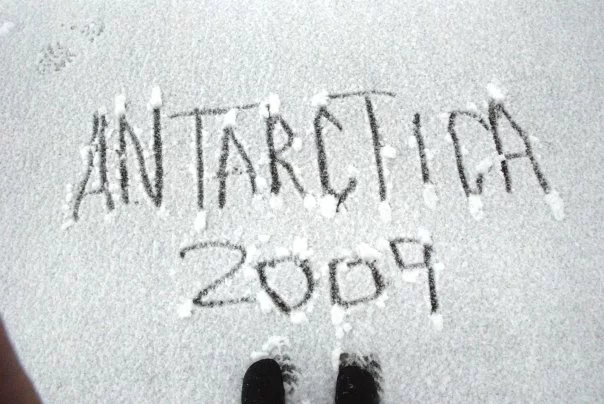Departure was scheduled right after 6:00pm and at that time the ropes were lifted from the quayside and our expedition ship moved off and headed out into the Beagle Channel to begin the long journey south to Antarctica.
We were out in the much dreaded Drake Passage. The winds were moderately strong but the ship rolled easily with the waves hitting her flanks and many of our stomachs just couldn’t take the motion. Due to the unpredicted rolls getting bigger, the lecture program was postponed until the afternoon so people could stay safe in their cabins. The hotel staff distributed some sandwiches. A few did manage to come out of their bunks and enjoyed the sunny morning.
The truly glorious scenery revealed itself despite the low cloud, spectacular rock cliffs were the background as we were greeted by Cape Petrels. From the landing beach on the southern shore it took only a short climb uphill and over the snow covered raised cobble beach to reach the first of a series of breeding patches of chinstrap penguins. The snow walk in between the colonies offered great views over the courting behaviours of both Chinstrap and Gentoo penguins. Most couples were formed, with some penguins already incubating their egg. Some of us witnessed Gull and Skua attacks, those scavenger birds can turn into smart predators, when they are hungry for food early in the season.
We started with a sunny day but the cloud set in over but somewhat calm day provided the perfect setting for a landing on Hydrurga Rocks. On the way, the zodiacs navigated around small, grounded icebergs and we were amazed by the variety in shape and colour of these huge ice masses. On arrival, two Weddell Seals who use the low laying bays as a haul out we awaiting us. But the islands are mostly home to Chinstrap penguins. We zigzagged around several colonies where mating, nest building and courting activities were taking place while the Snowy hills were roaming looking for any food remnants, including penguin poo on the menu. From the far end of the island, we sighted Antarctic cormorants building their nest on the highest hill and a snow petrel flew by. A bit of snow fell on the landscape, reminding us that the weather can change any moment. When we returned, wind and current had made the sea a bit choppier on the way back but the ride was still comfortable.
Cuverville Island was named by Adrien de Gerlache after a Vice admiral of the French navy who helped provisioning his ship, the “Belgica”. Four thousand pairs of Gentoo penguins nest in the island. We landed on shallow waters covered in ice blocks, then walked up in the snow to the Gentoo penguin rookeries. Several high points offered a overview of the islands shores and the glaciers in the background. We spent the morning among these little friends and also spotted South Polar Skuas and Terns in the surrounding. Grubby penguins were heading down to the beach to bath and are met by clean, well-fed, plump birds just returning from the sea, sometimes with a rock in their beak, an extra offering to their partner already on the nest. The trip back to the ship was headed into the wind but our skilled zodiac drivers managed to keep us dry.
Port Lockroy is a museum and historic site operated and maintained by the Antarctic Heritage Trust. It recreates the way of life of the pioneer Antarctic residents with a historic perspective with carefully conserved items in the 1944 original station , which also hosts a British Postal Service Office and a nice gift shop. After a museum visit, shopping and posting cards stamped with the special Antarctic stamp, all could mingle around and enjoy the Gentoo and Snowy Sheathbill roaming. Half the island is also protected from human visitation. Gentoo penguin were abounding around the buildings of Port Lockroy station, where they settled in the 80s, well after the station was build.
The snowy weather of previous days had turned to reveal ice-covered summits under the sun. USHUAIA had navigated into Dallmann Bay for our intended morning visit of the Melchior islands, but there was excessive ice for us to reach the location. Instead, we parked the boat in the middle of the bay and took off on a zodiac cruise. It did not take more than 300m for us to encounter several humpback whales who came quite close. One had a very deep cut in its dorsal fin, probably the result of a ship’s strike. Going exploring further, we enjoyed slowly cruising in the maze of ice floes that sea ice offered us and playing hide and seek with the fog on the way back to the ship. Snow petrels came to greet us, Wilson’s storm petrels and Antarctic terns were also flying about and curious Gentoo penguins came towards our zodiacs. The glassy calm waters reflecting the sky gave us this incredible feeling of timelessness.
The Ushuaia positioned into Paradise bay, in front of Brown Station, an Argentinian station, which is still occupied seasonally. We landed on a point where two cute orange wooden chalet-like buildings were awaiting us. The station is very small but the walk was entertaining. Gentoo penguins reside on the foreshore in a small colony. We reached a good viewpoint from which we could even do some bumslides down, a nice way to enjoy the fresh snow and spend the calories of the many good meals we had on the Ushuaia. Meanwhile, other cruised along the high rocky cliffs near the station. They discovered yet another Antarctic Cormorant colony and moved along to try and get the sight of the gigantic glacier, but the visibility was rather poor.
A Norwegian Whaling Company based in Tønsberg establish a whaling factory named Hvalfangerselskabet Hektor A/S which operated in the cinder-covered beach until 1931, when closed in part because of a slump of whale oil price and partly because technology had advanced. Today in Whaler’s Bay several wooden huts stand disintegrating. Boats and water barges lie buried to their gunwales in black volcanic sand. Huge boilers and tanks that once processed and held the whale oil now stand rusting under the southern sky.
Those of us who wanted to go for a swim walked back to the landing site early. They could change protected from the wind behind a large metal structure. Our expedition staff had provided the towels and thus the bravest of the bunch went for a full Antarctic bath in the waters mildly heated by the volcanic heat coming from deep in the Earth. With the Windchill factor, the water felt was 20C warmer than the air. What an exhilarating experience!!

The final bonus for this trip!. The Ushuaia carefully navigated to the anchorage and soon we landed on a rocky spit covered in snow where a few Gentoo penguins welcomed us to their realm for the last time. At the end of the long rocky spit we had been able to spot some elephant seals, so a few of us took off on a long walk in soft snow to reach the navigation mark that signal the entrance. This small harbor was well known to American and British sealers as early as in the 1820s. The wind was fierce outside but the harbor was protected.
The Drake remained reasonable and we could even spot some more seabirds & iceberg maybe the last we would see for a while. A few albatrosses and Cape petrels seemed to wave us goodbye as they glided along beside the ship. As we exchanged stories with other voyagers about the days past, we realized that though we had all taken the same trip, our individual experiences varied quite a bit and it looked as if each of us had taken somewhat different journeys.
Dawn lit the ending of our trip. We had returned the same but much different, changed somehow by having conquered a continent known by so few, loved by so many.
It was a memorable journey, which had met our expectations. We had seen: whales, sea birds, seals and penguins, as well as the ice, the glaciers, icebergs and why not, even crossed the rugged Drake Passage twice .
After breakfast it was time to go. Fare thy well, Ushuaia, you explorer of the Ice!
Photos & Content (C) by Anil Thakkar







































